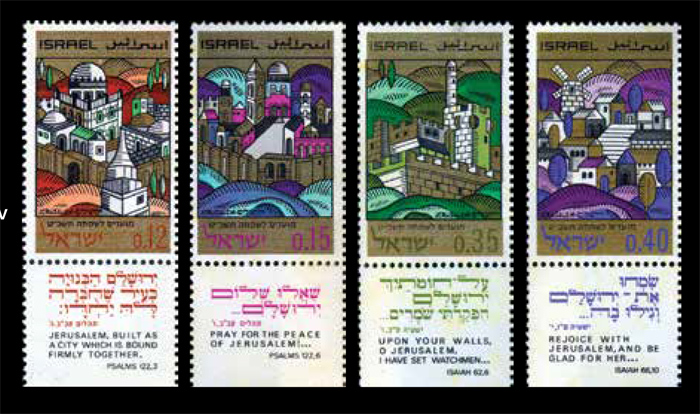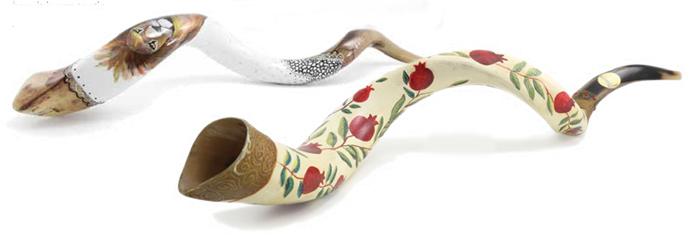Every year at Rosh Hashanah, the Jewish New Year, the Israel Postal Company (previously the Israel Postal Authority) issues a festival stamp series including a first-day commemorative cancel for the series.
The first festival series was issued in 1948. It was designed by Otte Wallish, the graphic designer responsible for the design and calligraphy of Israel’s Declaration of Independence, as well as the state’s first postage stamps.
Wallish’s “flying scroll” design was based on ancient seals found on the handles of jars dating back to 700-600 BCE. According to the Israel Post website, it is impossible to say with certainty what the motif represents but since 1940s archaeological research associated the “flying scroll” with the first Jewish-Roman war and the Bar Kochba Revolt, it is fair to assume that Wallish was referencing this historical event as a parallel to the newly established State of Israel.
The following year, the Wallish-designed 1949 festival series honored the freshly minted Israel Defense Forces, created by order of Prime Minister Ben-Gurion following the disbanding of all paramilitary groups that had fought prior to independence.
Over the years, the festival series honored general themes such as Miriam Karoly’s 1955 series depicting biblical musical instruments; celebrated victories like Dror Ben Dov’s 1968 series honoring reunified Jerusalem; and paid homage to previously disenfranchised communities as in the 1974 series by Moshe Amar depicting the Sephardic synagogues of Jerusalem.
During the 1980s, influenced perhaps by the opening of the Diaspora Museum in 1978, the festival series took a deep dive into Judaica and, in fact, for two years running presented artifacts crediting the museum in 1987 and 1988 in a series, also designed by Dror Ben Dov.
buy cenforce online
In the 1990s, the Post Office developed a sort of 3-in-1 concept for the festival series, with the first stamp in the series presenting Rosh Hashanah, the second honoring Yom Kippur and the third celebrating Sukkot or Simchat Torah, as in the series designed by Ora and Eliyahu Schwarz in 1991.
And just as the world looked forward to the new millennium, the Israel Postal Authority looked backwards in a nostalgia-themed festival series. Instead of presenting original graphics, as it had done for decades, the year 2000 series took inspiration from old Jewish New Year postcards provided by Israeliana ephemera collector Hayim Shtayer.
Over the past decade, the festival series’ themes have focused more on the religious aspect of the High Holidays, as in the 2013 series “The Month of Tishrei” by Aharon Shevo.
It presented three of the special customs associated with the period: the Tashlich ceremony of symbolically casting away any sins on water, the Yom Kippur Kol Nidrei prayer, and bearing the lulav (palm frond) at Sukkot.

This year’s Festival 2020 – Modern Jewish Art Mandalas series features “Shofar.”
This stamp has been described as follows:
Throughout the generations, creators of Jewish art have reflected the values of Jewish religion and culture in their works, while utilizing the techniques of their times.
A mandala is a round figure comprised of circles of increasing size filled with drawings and graphic symbols centered around a common point.
buy cipro online
A shofar is featured at the center of the stamp dedicated to the “Shofar” blessing, surrounded by motifs of Jerusalem to represent the idea of the shofar as heralding the Redemption. The stamp features the verse: And a very loud blast of the horn (Exodus 19:16).
buy clozaril online
This piece has been edited from an article originally appearing on Israel21c.org.






